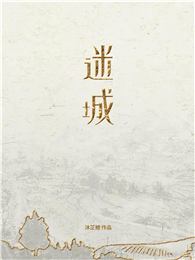This handbook comprehensively covers the rich tradition of literary devices in Persian language and literature. It establishes an incontrovertible connection between literary devices - figurative language, rhetoric, and so on - and pedagogy and poetics in both written and oral expression. This volume offers a detailed and thorough overview of these all-important literary devices and their dynamics, creating a literary powerhouse in the Persian-speaking world in both historical and contemporary terms. The handbook carves out a space dedicated to colloquialisms and idioms, as they are interwoven into the fabric of Persian culture, within the larger field of rhetoric. These devices are fostered and furthered in their potency, both culturally and linguistically, by the poets, writers, and rhetoricians who utilize them. The poetical hermeneutics and the long tradition of interpretative work on Persian literary works comprises an important part of the work. Herein is established a culture and history in texts and oral history that point to a culturally tailored complexity as per figurative language, idioms, colloquialisms, and the rhetoric they help found and/or re-define. This historical analysis of both classical and modern rhetorical expressions, metaphors, similes, hyperbole, and other literary devices enables an understanding of the epistemological and cultural meaning of what constitute Persian identity in the Persian-speaking world, and beyond. This compendious work is a must-have on the shelves of scholars and students studying Persian, Arabic, and/or European literary studies and linguistics, as well as those working in Persian language instruction, Middle Eastern history and cultural studies.
| FindBook |
有 1 項符合
Persian Literary Devices: Eight Essays的圖書 |
 |
Persian Literary Devices: Eight Essays 出版社:Springer 出版日期:2024-09-25 語言:英文 規格:精裝 / 普通級/ 初版 |
| 圖書館借閱 |
| 國家圖書館 | 全國圖書書目資訊網 | 國立公共資訊圖書館 | 電子書服務平台 | MetaCat 跨館整合查詢 |
| 臺北市立圖書館 | 新北市立圖書館 | 基隆市公共圖書館 | 桃園市立圖書館 | 新竹縣公共圖書館 |
| 苗栗縣立圖書館 | 臺中市立圖書館 | 彰化縣公共圖書館 | 南投縣文化局 | 雲林縣公共圖書館 |
| 嘉義縣圖書館 | 臺南市立圖書館 | 高雄市立圖書館 | 屏東縣公共圖書館 | 宜蘭縣公共圖書館 |
| 花蓮縣文化局 | 臺東縣文化處 |
|
|
內容簡介
作者簡介
Alireza Korangy received his PhD from the Department of Near Eastern Languages and Civilizations at Harvard University. His field of research is classical Persian and Arabic philology with a special emphasis on poetics, rhetoric, folklore and linguistics.
Pouneh Shabani-Jadidi is Senior Faculty Lecturer of Persian Language and Linguistics at McGill University. She holds a PhD in Linguistics from the University of Ottawa (2012) as well as a PhD in Applied Linguistics from Tehran Azad University (2004). She has taught Persian language and linguistics as well as Persian literature and translation at McGill University, the University of Oxford, the University of Chicago, and Tehran Azad University since 1997. She is the author of Processing Compound Verbs in Persian: A Psycholinguistic Approach to Complex Predicates (Leiden and University of Chicago Press, 2014) and Translation Metacognitive Strategies (VDMVerlag, 2009). She is the editor of The Routledge Handbook of Second Language Acquisition and Pedagogy of Persian (2020) and co-editor of The Oxford Handbook of Persian Linguistics (2018). She is the co-translator of The Thousand Families: Commentary on Leading Political Figures of Nineteenth Century Iran, by Ali Shabani (Peter Lang, 2018) and Hafez in Love: A Novel, by Iraj Pezeshkzad (Syracuse University Press, 2020), both with Patricia Higgins. In addition, she has published several proficiency-based textbooks for Persian, namely The Routledge Introductory Persian Course (2010, 2nded. 2020) and The Routledge Intermediate Persian Course (2012), both with Dominic Brookshaw, as well as What the Persian Media Says (Routledge, 2015) and The Routledge Advanced Persian Course (2020). She serves as reviewer for International Journal of Iranian Studies, International Journal of Applied Linguistics, Sage Open Journal, Frontiers in Psychology, International Journal of Psycholinguistic Research, and LINGUA. In addition, she served as president of the American Association of Teachers of Persian in 2018-2020.
Azadeh Vatanpour is a Ph.D. (ABD) candidate at Emory University. She holds an MA in Ancient Iranian Culture and Languages from Shiraz University, an MA in Folk Studies, and an MA in Religious Studies from Western Kentucky University. As a scholar of religion and minority studies, her research focuses on ethno-religious minority groups in the Middle East, particularly among the Yarsan community. Vatanpour is currently working on Essays on Gurani Literature, Edited Volume with Dr. Alireza Korangy, delving into the extensive repertoire of literature written in the Gurani language by various ethno-religious groups residing in the Zagros region. She is the Director of the Program of Persian Studies at University of Austin.
|










